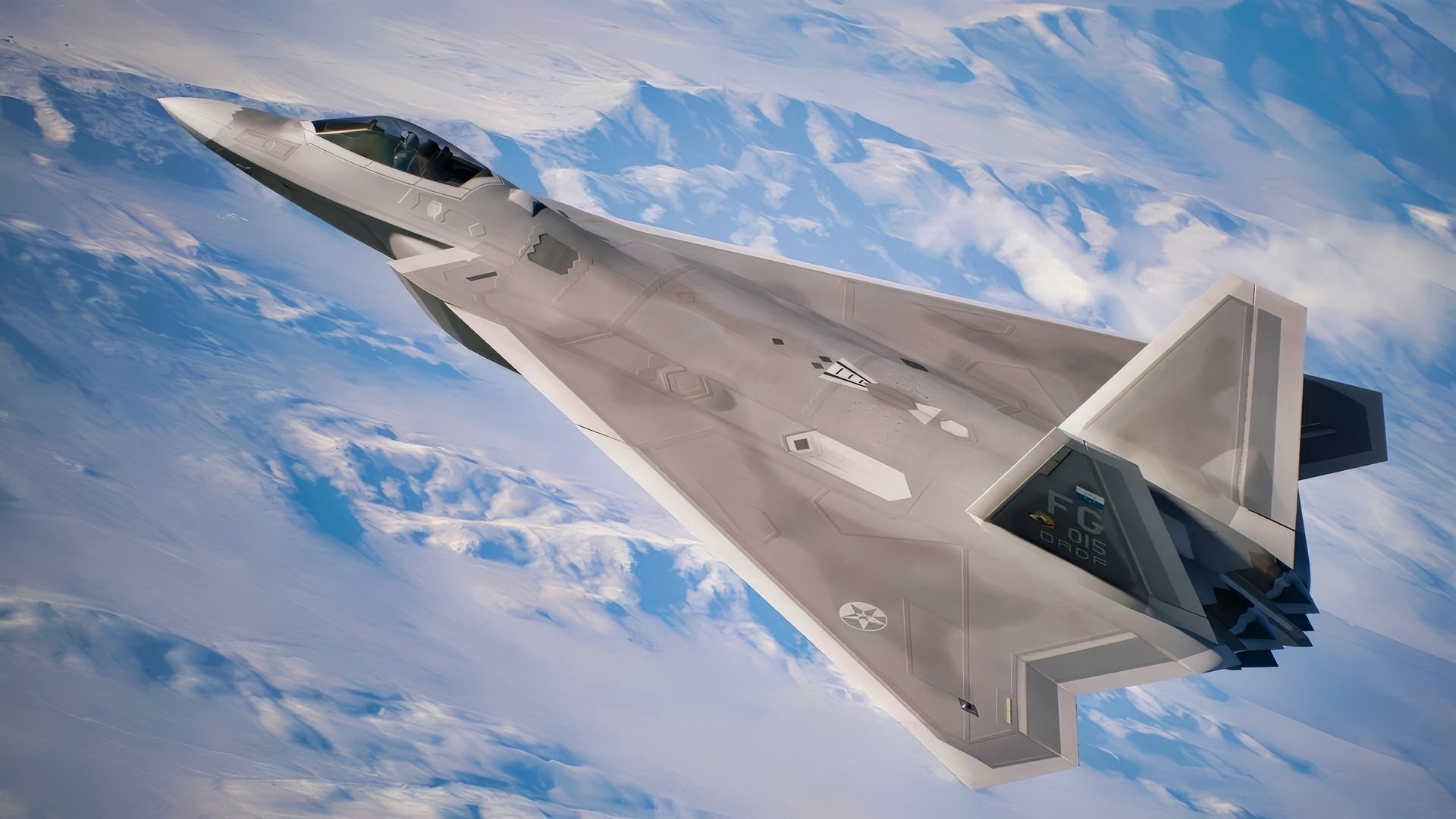Key Points and Summary – Two decades ago, Lockheed Martin floated the FB-22: a long-range, stealthy strike derivative of the F-22 Raptor.
-With bigger wings, more fuel, and a much larger internal weapons bay, it promised “day-one” penetration, long legs, and a dense precision-bomb magazine.
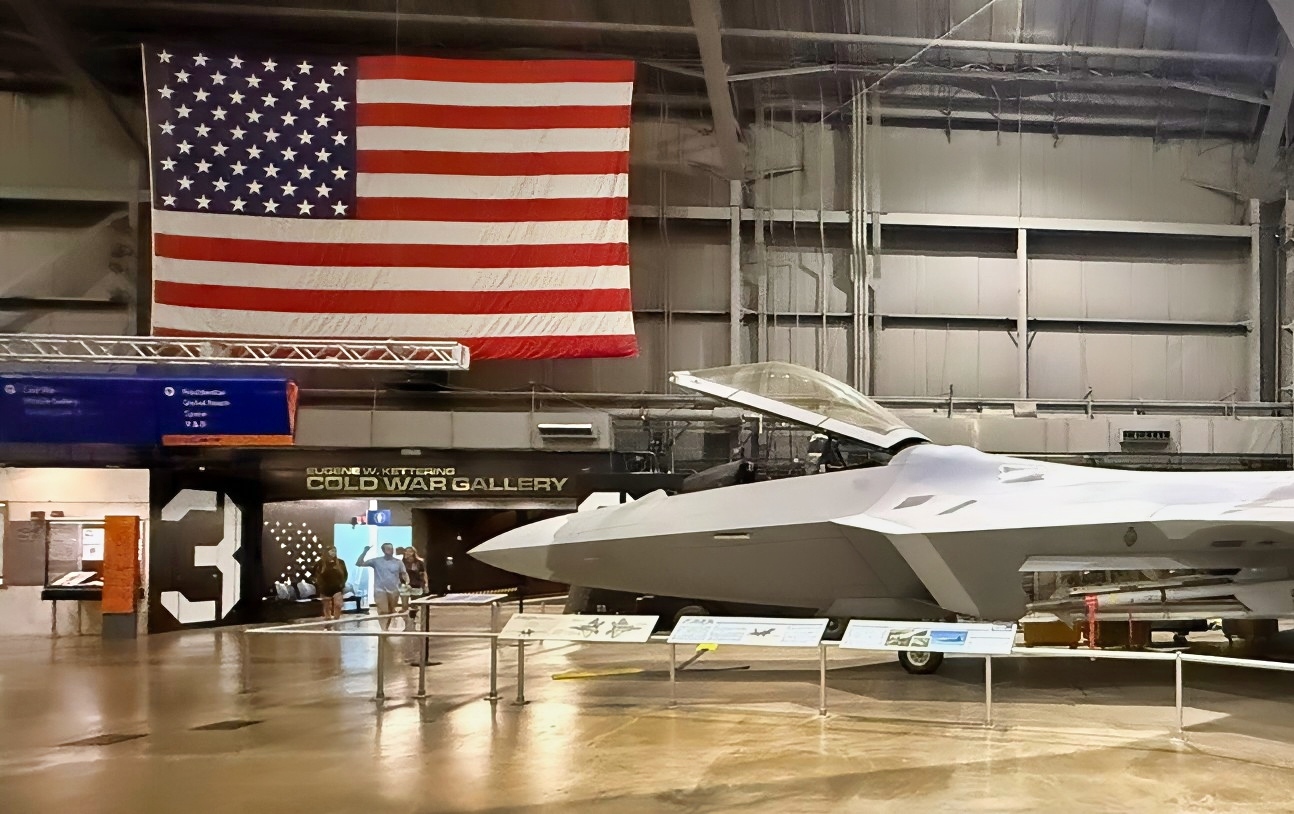
F-22A Raptor in the Air Force Museum. Image Credit: National Security Journal Original Photo.
-The concept died amid budgets, competing priorities, and risk aversion during wars that didn’t require a stealth bomber-fighter hybrid.
-In a 2025 Indo-Pacific or European contingency—where range, survivability, and massed precision effects matter—the absence of an FB-22 is felt.
-Even a flying testbed could have paid dividends.
-The result: a lingering missed opportunity that still shapes force design debates.
The FB-22 ‘Raptor’ Stealth Bomber: What Could Have Been
The F-22 Raptor began life as a pure air-dominance machine: a survivable sensor-shooter that would dethrone enemy fighters before they ever saw it, protect high-value assets, and open the way for everything else. It did that brilliantly. Low observable shaping, supercruise, high-energy maneuvering, an advanced radar, and fusion before “fusion” was fashionable—this was the formula. The problem wasn’t the F-22’s performance; it was arithmetic. The Cold War ended, procurement shrank, and the production run collapsed to a fraction of the original plan. The Air Force got a jewel box—exquisite, scarce, and expensive to open.

F-22 Raptor. Image Credit: Creative Commons.
That scarcity sharpened an idea already circulating in the early 2000s: if the service couldn’t buy enough Raptors to be everywhere, could it make each airframe do more? Specifically, could the Raptor’s stealth, kinematics, and big nose support a strike role—one that reached far beyond legacy fighters, brought serious internal payload, and hit defended targets on “night one” of a war?
Enter the FB-22 concept: a bomber-ized Raptor with theater-relevant range and a dense internal weapons magazine. It was never a paper fantasy.
Engineers sketched credible paths to more fuel, more bay volume, and a crew station tailored for strike management—without throwing away the Raptor’s stealth DNA.
What “FB-22” Actually Meant
The core trade was elegant: stretch the Raptor’s reach and magazine while preserving its stealth and speed. The notional FB-22 kept the F-22’s basic fuselage, engines, and avionics core, but substituted a much larger, higher-aspect wing that provided more internal fuel and room for a lengthened center weapons bay. You can think of it as three upgrades wrapped into one airframe:
Range And Endurance. A bigger wing isn’t cosmetic. It adds fuel and aerodynamic efficiency at altitude, turning a superb sprinter into a legitimate marathoner—critical in the Indo-Pacific, where tankers are precious and survivability depends on where your tanker can safely orbit.
Magazine Depth. A longer, deeper bay meant many more Small Diameter Bombs (and other compact precision munitions) inside the stealth envelope, or a couple of larger standoff weapons when the mission called for reach over mass. The selling point wasn’t merely “stealth that bombs,” but stealth that bombs a lot before coming home.
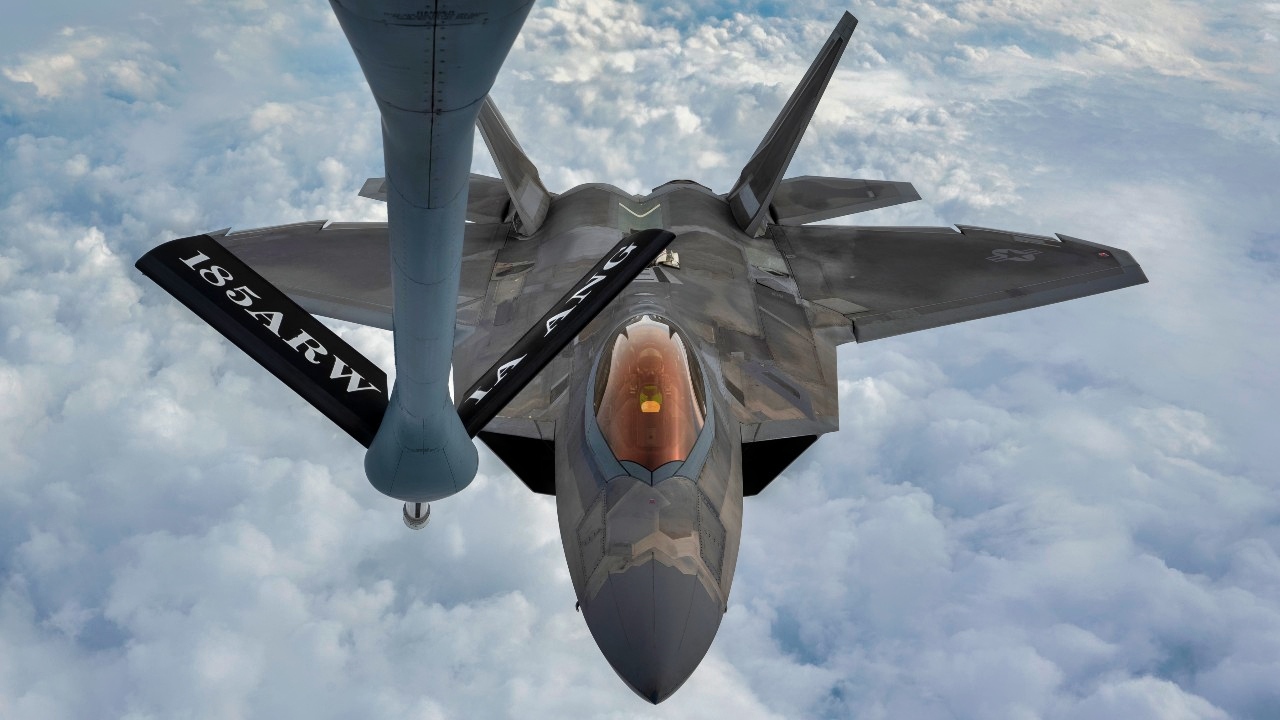
A U.S. Air Force F-22 Raptor approaches the boom of a KC-135 Stratotanker during a refueling mission over the Florida Panhandle, Dec. 14, 2022. Aerial refueling allows pilots to stay airborne for longer periods of time, increasing the mission capabilities individual aircraft can support. (U.S. Air Force photo by Tech. Sgt. Betty R. Chevalier)
Crew And Mission Systems For Strike. While single-seat was conceivable, the smart play was a two-crew cockpit: a pilot flying energy and geometry, and a second crew member managing sensors, targeting, electronic warfare, weaponeering, and the dynamic reroutes that make modern strike hard.
In spirit, the FB-22 would have been to the F-22 what the F-15E was to the F-15A/C—except with low observability baked in, not bolted on.
How The Raptor Would Have Become A Bomber
Transforming a top-end fighter into a capable bomber is more than bolting racks to the wings. The FB-22 path implied coordinated changes across the jet:
Structure And Aerodynamics. A new wing planform—larger area, tweaked sweep, and more internal volume—would deliver fuel and lift without wrecking signature. The tails and inlets could remain close to baseline, but their junctions and edges would be massaged to keep radar returns tame.
Fuel System And Thermal Management. More fuel is also more heat to manage. Modern strike profiles demand high-duty cycles for processing, sensors, and jammers; electrical power and cooling margins would be uprated to keep the brain from cooking.
Weapons Bay Redesign. The center bay would be stretched and potentially deepened to carry dozens of compact precision weapons or a smaller count of larger glide/cruise weapons. Side bays, useful for short-range missiles on the fighter, could be repurposed for missionized payloads or kept for self-defense.
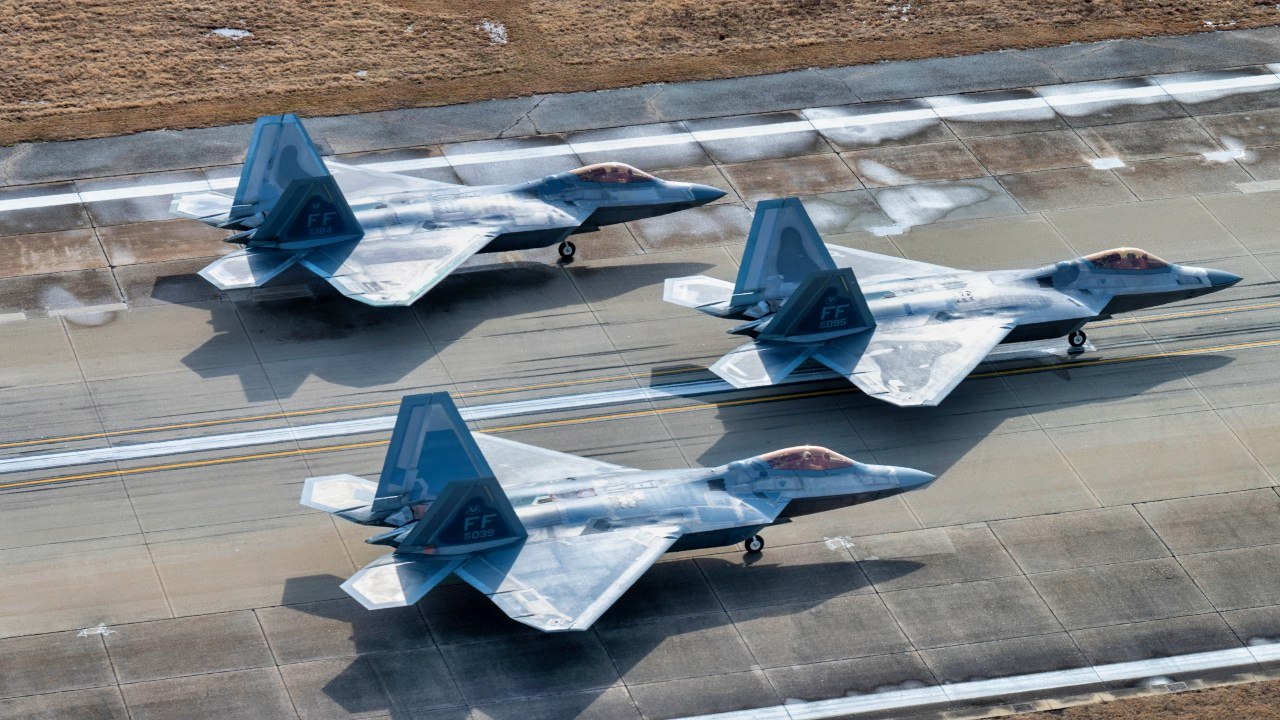
LANGLEY AIR FORCE BASE, Va. – F-22 Raptors from the 1st Fighter Wing sit in position on the runway fduring the Elephant Walk at Langley Air Force Base, Virginia, Jan. 31, 2025. The surge was designed to showcase the wing’s operational readiness and its ability to rapidly mobilize airpower. The 1st FW operates F-22 Raptors and T-38 Talons, maintaining combat capabilities that enable the U.S. Air Force to execute missions across the globe. With a focus on air superiority, the 1st FW plays a critical role in defending the nation’s interests. (U.S. Air Force photo by Tech Sgt. Matthew Coleman-Foster)
Avionics And Human-Machine Teaming. Strike is cognitive. The cockpit logic would shift from a single-pilot fighter display philosophy toward a mission-management workstation: sensor control, target correlation, datalink choreography, weaponeering, and deconfliction with other packages. Think “mini bomber” in pilot workflow, not just in payload.
Survivability Beyond Stealth. The FB-22 would rely on low observability first, but not alone. It would need electronic warfare options that sync with its signatures: deception jamming timed to weapon releases, low-probability-of-intercept radar modes, and disciplined emissions to keep its presence ambiguous.
The result would not have been a B-2 substitute. It would have been a theater bomber—fast, stealthy, flexible, and flown in fighter-style numbers.
What The Air Force Would Have Gained
Three gains stand out—each painfully relevant in 2025:
1) Day-One Magazine Depth At Range. A single FB-22 could have launched with a couple dozen small precision weapons inside stealth, not the handful typical of stealth fighters. Multiply that by a flight and you have a salvo problem for enemy air defenses on the very first night—runways cratered, SAM sites blinded, and command nodes shocked, without burning through the limited B-2/B-21 inventory or exposing 4th-gen jets before corridors are clean.
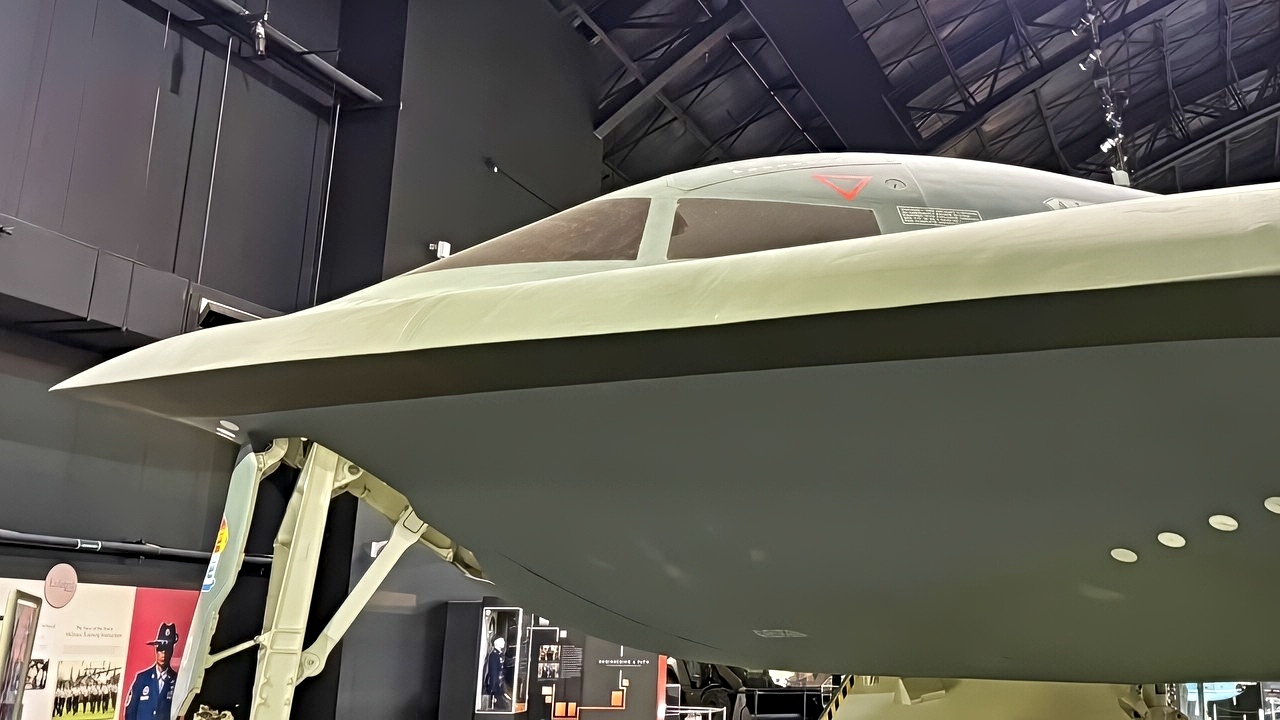
B-2 Bomber Sitting in Museum National Security Journal Photos. All Rights Reserved.
2) Tanker Relief. In the Pacific, the limiting factor is often gas, not bombs. By carrying its own legs, the FB-22 would push the refueling problem outward. Fewer tanker brackets in contested airspace; more margin when a tanker orbits must be moved by threat.
3) A Versatile Stealth Truck. Precision weapons are getting smarter and smaller. A stealthy airframe that can carry many of them becomes a flexible answer to dispersed, time-sensitive targets—from pop-up air defenses to mobile anti-ship batteries along coastlines.
Put simply, the FB-22 promised mass and reach in a package the Air Force already knew how to train, maintain, and fight.
Why It Didn’t Happen
The reasons were as mundane as they were decisive.
Budgets And Wars Of The Moment. The early-to-mid 2000s Air Force was consumed by wars that didn’t require a stealthy theater bomber; permissive airspace and coin operations shaped budgets. Money flowed to fleets that were flying daily—ISR, airlift, tankers—and to the F-35, which had political gravity and promised allied commonality.
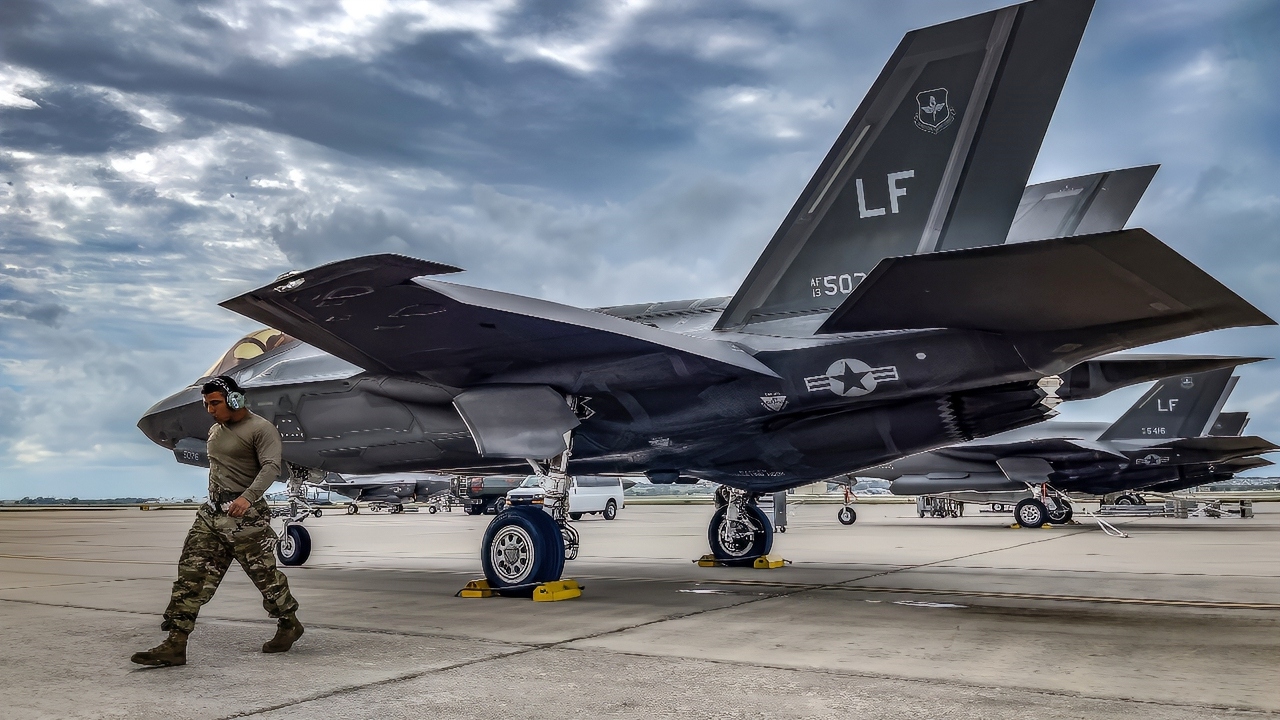
U.S. Air Force service members from the 62nd Fighter Squadron, Luke Air Force Base, Ariz., conduct flight line operations in support of the F-35 Lightning II TDY, Oct. 28, 2021, at Joint Base San Antonio-Kelly Field, Texas. The 62nd FS will be training with F-16s from the 149th Fighter Wing and the 301st Fighter Wing, along with T-38s from the 301st Fighter Wing. The multi-role capabilities of the F-35 allows them to perform missions which traditionally required numerous specialized aircraft. The complimentary air superiority capabilities of the F-35 will augment our air superiority fleet and ensure we continue to “own the skies” over future battlefields. (U.S. Air Force photo by Brian G. Rhodes)
Program Risk And Politics. The Raptor line was already under political scrutiny for cost and quantity. Pitching a derivative bomber risked being seen as “more Raptor,” just when influential voices wanted fewer Raptors and more “affordable” jets. Meanwhile, senior leaders had set a path toward a next-generation bomber; the FB-22 looked like a detour.
Industrial And Opportunity Costs. Every hour spent on FB-22 integration would have been an hour not spent on sustaining the F-22 fleet or accelerating the future bomber. In a constrained engineering ecosystem, choices cascade; the safe choice won.
Misread Timelines. Many assumed the timeline for a new penetrating bomber would be short and that regional contingencies could be covered by standoff weapons and 4th-gen strike under a jamming umbrella. Both assumptions now look optimistic.
The concept slid from “near-term option” to “interesting briefing,” then disappeared into history’s appendix.
Why The Absence Hurts More In 2025
Look at today’s map. In the Indo-Pacific, distances are brutal, tankers are targets, and enemies disperse and decoy across thousands of miles. In Europe, long-range SAMs reach deep, and mobile launchers dart between hides. The Air Force has a small number of penetrating bombers, a large number of 4th-gen fighters, and a steadily growing 5th-gen fleet whose internal bays are limited by stealth geometry. What’s missing is the middle tier: a stealthy, fighter-like aircraft with theater range and a big internal magazine.
An FB-22 would not replace the B-21’s strategic mission or the F-35’s penetrating ISR/strike role. It would multiply them. B-21s could concentrate on the hardest targets; F-35s could focus on finding and cueing; FB-22s could pour effects into the window those platforms pry open—quickly, repeatedly, at scale. In a short, violent opening phase, that difference is the difference between sufficiency and strain.
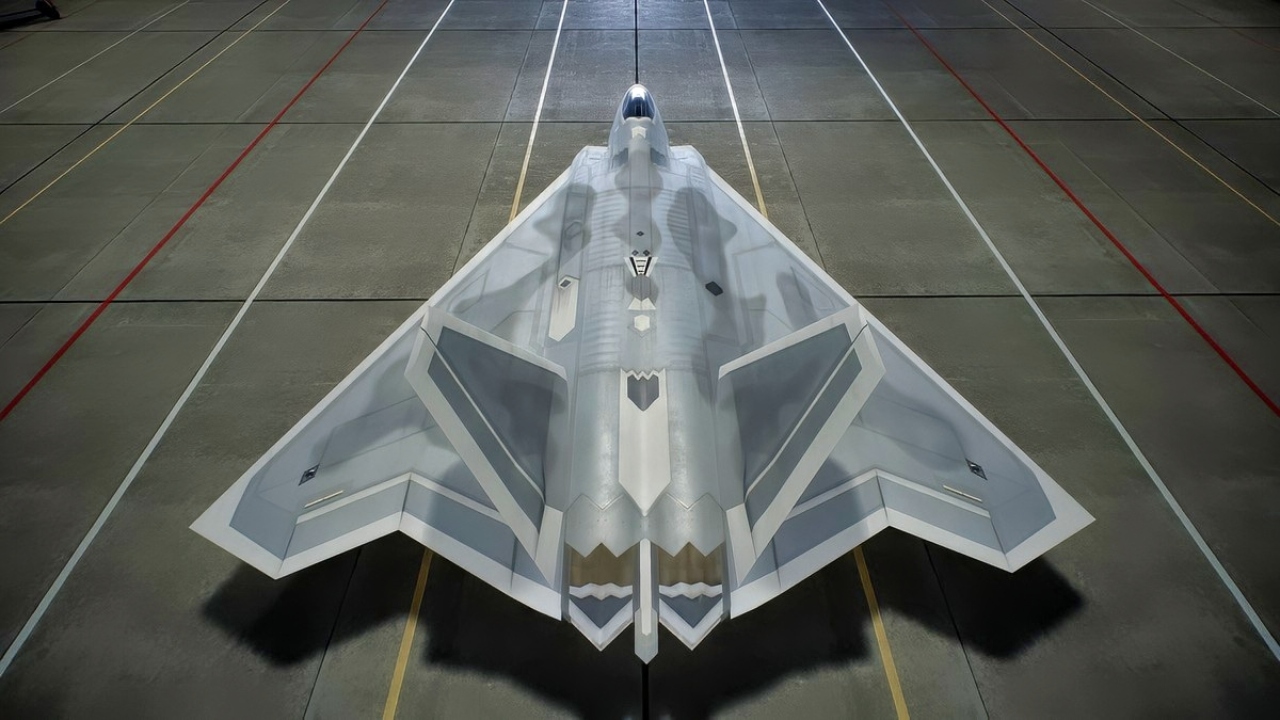
Lockheed Martin FB-22 Raptor Stealth Bomber. Image Credit: Creative Commons.
How An FB-22 Might Have Shaped The Force
Imagine the Air Force fielding two-dozen FB-22s per year for several years in the late 2000s. By the mid-2010s you’d have a few wings of stealthy theater bombers trained to fly with Raptors and F-35s. The operational playbook would look different:
Distributed Penetration. Not just a few bombers but dozens of stealth jets pressing across a wide front, forcing defenders to cover too much territory with too few interceptors and radars.
First-Night Suppression At Scale. With internal SDB-class loads, FB-22 packages could strip away mobile radars, launchers, and fighter bases fast, easing the burden on every subsequent sortie.
Maritime Strike Options. In an age of anti-ship missiles, a stealthy platform that can carry a mix of light precision weapons and select standoff ordnance is a nightmare for shore-based coastal defenses and logistics nodes.
Tanker Economy. More stealth jets with long legs means fewer tanker orbits close to the fight, which in turn reduces risk and frees tankers for other tasks.
Downstream, you’d expect different procurement debates. The urgency behind buying as many heavy penetrating bombers might be moderated by a robust stealth strike “middle weight.” The pressure on fighters to do everything would ease.
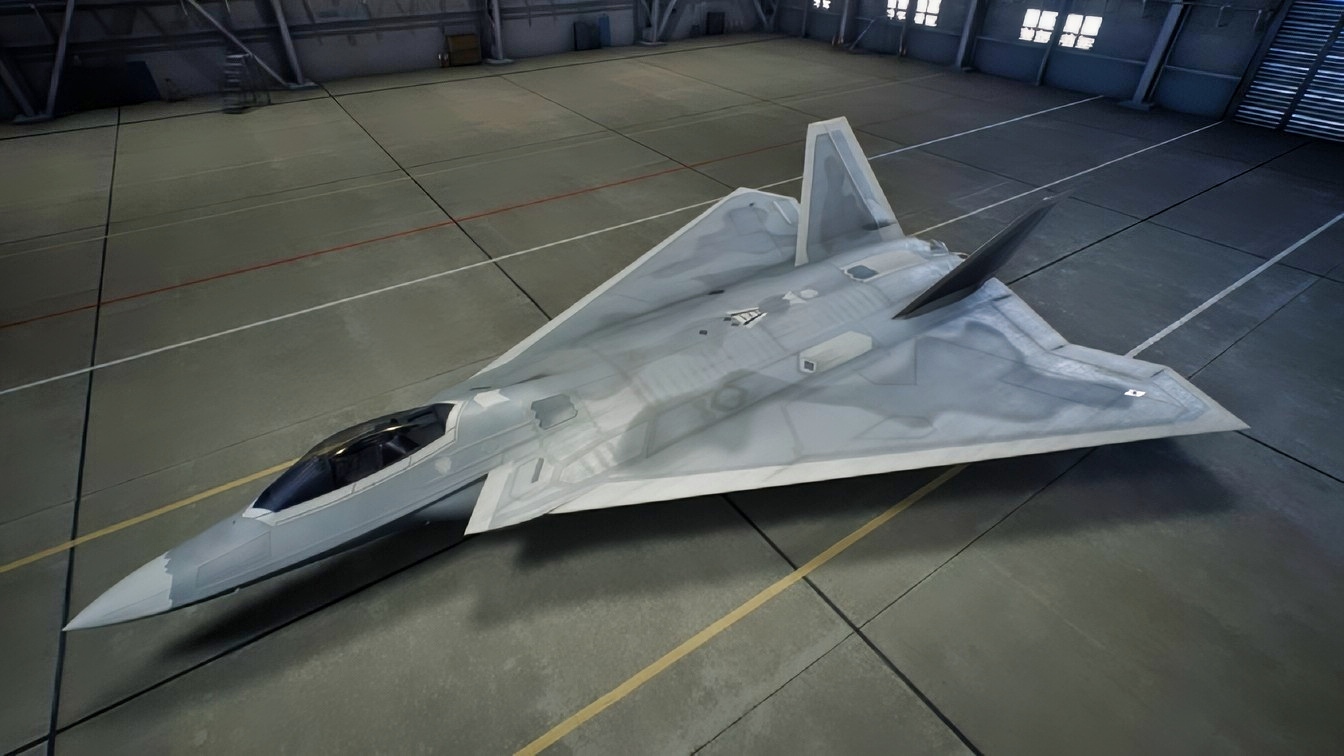
FB-22 Strike Raptor Sideview. Image Credit: Creative Commons.
The “At Least Build A Testbed” Case
Even if the price of a full-rate FB-22 fleet was a bridge too far, there was a cheaper, smarter path: fly a demonstrator. Prove the wing. Prove the bay. Prove the crew system. Learn what stealth does when you stretch the planform and when you add thermal and power loads for high-duty strike emitters. Measure maintenance impacts. Map tanker trades in the real world.
Those lessons would have flowed directly into how the Air Force designs mission systems, CONOPS, and sustainment for any thrust-to-payload stealth aircraft. They might have seeded a rapid-prototype “Raptor bomber” squadron for contingency use, or they might simply have given B-21 and next-gen air dominance (NGAD) teams real data instead of models. Either way, the Air Force would have bought something invaluable: options.
Why Leaders Balked—And Why That Logic Is Thinner Now
The arguments against FB-22 were not stupid:
Don’t dilute a superb air-to-air platform.
Don’t split scarce dollars and engineers.
Don’t commit to a derivative when an all-new bomber is on the horizon.
Don’t create another sustainment line with unique parts.
All true—then. In 2025, the picture has shifted. The all-new bomber exists, but it will not be fielded in massive numbers overnight. The force still flies many 4th-gen fighters that need corridors opened and kept open. Tankers remain vulnerable. Time remains the currency. Against China or Russia, you want density of stealth effects early. The FB-22—fielded or even just proven—would have given the Air Force a ready-to-scale template for that density.
What An FB-22 Would Look Like In Practice
Picture a four-ship: two FB-22s, a pair of F-35s forward as silent scouts. The F-35s map threats and targets; the FB-22s ride high with internal loads of compact precision weapons. A stealthy AEW node (or forward F-35s) feeds tracks; the FB-22 back-seaters correlate, assign weapons, and time salvos so that defenses have to choose which problem to solve. A Raptor CAP sanitizes the altitude band where interceptors would try to climb. The first pass knocks down radars and base operations centers. The second pass craters runways and isolates fuel. The third pass switches axes, turning a linear IADS into a spinning plate act that starts dropping.

Two U.S. Air Force F-35A Lightning II aircraft, with the F-35 Demonstration Team, approach a U.S. Air Force KC-135 for in-flight refueling en route to their next airshow at Pensacola, Florida, on 28 October, 2024. The F-35 Demo Team travels to various bases to showcase the capabilities of the most advanced 5th generation fighter aircraft. (U.S. Air Force photo by Senior Airman Nicholas Rupiper)
The math isn’t fantasy. It is magazine depth times survivability, multiplied by coordination. That is precisely what a middle-weight stealth bomber exists to do.
Would It Have Been Cheap? No. Worth It? Yes.
A larger wing, bay changes, systems upgrades, testing, and a second crew station don’t come free. Nor do spare parts, training pipelines, and simulators. But the question is cost per effect on the nights that decide a war. When you can strip an adversary’s air defenses and bases fast, you shorten campaigns, save tankers and crews, and reduce the number of times pilots must reenter the teeth of the threat. And when you have enough such aircraft to spread risk and sustain pressure, you reduce the odds that a small number of exquisite bombers must do everything perfectly.
That is the value proposition the FB-22 carried—and the bill the Air Force chose not to pay.
The Counterargument: Didn’t The Raptor Already Gain A Strike Role?
Yes, the F-22 picked up precision strike options over the years. But a fighter retrofitted for limited strike is different from a strike-first variant designed around range and magazine depth. The FB-22 would have started with “how do we deliver many precise effects, far away, under fire?” and then ensured it could defend itself like a Raptor. The baseline F-22 started with air-to-air and added bombs where it could. That difference shows up in bay geometry, fuel fraction, crew tasking, and mission systems.
Lessons For The Next 10 Years
The FB-22 that never was still teaches:
Don’t Confuse Platform Scarcity With Mission Scarcity. You can build a middle-weight stealth bomber in fighter numbers; you don’t have to settle for a handful of heavies.
Prototype To Buy Options. Even if production is a bridge too far, a flying testbed pays for itself in design truths that survive first contact with reality.
Range Plus Magazine Beat Brochure Speed. In the Indo-Pacific and across Europe, endurance and effects per sortie write the war plan, not top-end Mach numbers.
Crew Bandwidth Is A Weapon. Two-seat stealth strike variants keep the cognitive edge where it belongs: in the cockpit, deciding under uncertainty with fused data.
These are the same principles shaping the B-21, NGAD, and collaborative combat aircraft debates today.
The FB-22 Verdict: A Missed Opportunity—And A Standing Challenge
The Air Force didn’t need to buy 300 FB-22s to be smarter. It needed to prove the idea, bank the lessons, and keep the option alive. It did none of those things. In an era defined by distances, sophisticated air defenses, and the requirement to produce salvo mass early, that choice still stings. It left planners with a narrow menu: a small fleet of penetrating bombers, many 4th-gen jets that require help, and 5th-gen fighters whose internal bays limit how much they can accomplish per pass.
An FB-22 wouldn’t have solved everything. It would have solved enough things, fast, to change outcomes and timelines. The fact that we’re still sketching its ghost into today’s war games is the best proof that the idea had merit. The challenge now is to capture its logic—range, magazine depth, and cognitive margin inside stealth—in the programs that do exist.
The missed chance should at least buy us better choices the next time a good concept knocks.
About the Author: Harry J. Kazianis
Harry J. Kazianis (@Grecianformula) is Editor-In-Chief and President of National Security Journal. He was the former Senior Director of National Security Affairs at the Center for the National Interest (CFTNI), a foreign policy think tank founded by Richard Nixon based in Washington, DC. Harry has over a decade of experience in think tanks and national security publishing. His ideas have been published in the NY Times, The Washington Post, The Wall Street Journal, CNN, and many other outlets worldwide. He has held positions at CSIS, the Heritage Foundation, the University of Nottingham, and several other institutions related to national security research and studies. He is the former Executive Editor of the National Interest and the Diplomat. He holds a Master’s degree focusing on international affairs from Harvard University.
More Military
SR-71 Blackbird: We Got Right Up Close to the Mach 3 Legend
The LongShot Munition Could Transform Aerial Warfare Forever
‘Cost Crisis’: $141,000,000,000 For America’s New LGM-35A Sentinel ICBM
China’s J-50 Stealth Fighter Is Breaking All the Rules
‘Built for the Impossible Missions’: The A-29 Super Tucano’s Secret Is Out


